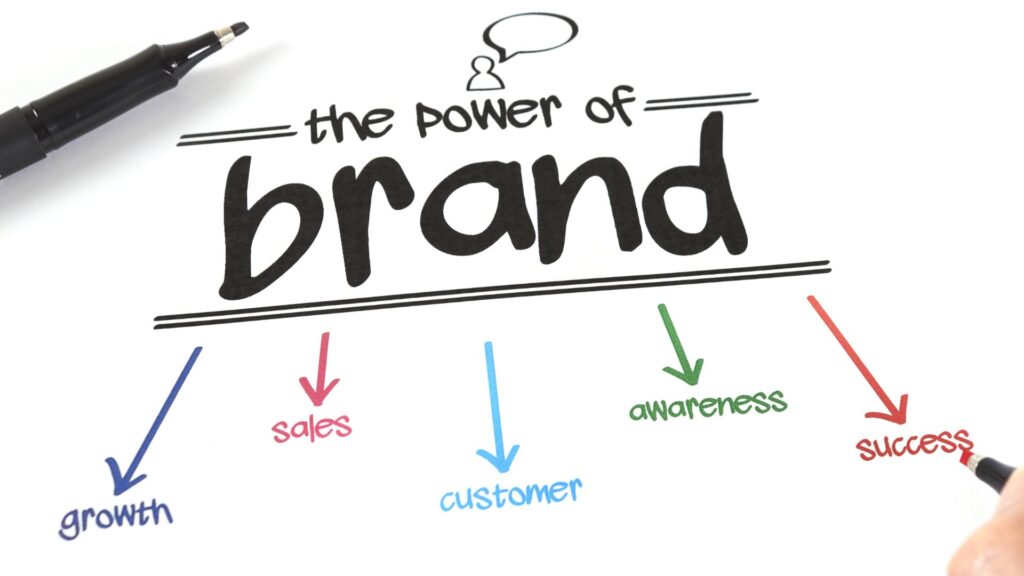
Why Web Development Is Important (And Not Just for Tech Bros)
Wondering why web development is important in 2025? We’re breaking it down—real talk style. From first impressions to SEO clout, here’s why your website needs to stop being basic.

In a world where every scroll, swipe, and tap influences perception, your digital brand isn’t just a nice-to-have—it’s your identity. If your brand doesn’t show up online with purpose, personality, and consistency, you’re basically invisible to the digital-first generation. Digital branding is how people recognize you, trust you, and vibe with your presence across platforms. Let’s break it down.
Digital branding is the vibe check of your business in the online world. It’s not just your logo or your website—it’s the whole experience people get when they interact with your brand online. We’re talking visuals, voice, values, and visibility. It’s the look, the tone, the energy. It’s how you connect with your audience through social media, websites, content, and even those cheeky Instagram Reels.
Think of digital branding as your brand’s digital personality. It’s how your brand dresses, speaks, and behaves online. If done right, it becomes a digital signature that people instantly recognize and trust.
Let’s clear this up because they’re not the same.
● Digital Branding is about who you are. It’s your story, your voice, your visuals—your overall online identity.
● Digital Marketing is about what you do to push that identity into the world and drive results—think ads, emails, funnels, and all that jazz.
In short: Branding builds the vibe. Marketing brings the tribe.
Branding is long-term, foundational, and emotional. Marketing is short-term, tactical, and performance-driven. You need both, but branding sets the tone for how marketing performs.
Why should you care? Because digital branding unlocks the kind of trust, attention, and loyalty money can’t always buy. Here’s what you get:
● Instant Recognition: People remember your look and feel without even reading your name.
● Audience Trust: Consistency builds credibility. People buy from brands they trust.
● Stronger Engagement: A solid brand voice creates connection—people engage with what feels real.
● Higher Conversion Rates: When users feel your brand, they’re more likely to click, sign up, and buy.
● Future-Proof Growth: Digital branding helps you adapt across channels and platforms as trends shift.
So, how do you make your brand pop online?
1. Be authentic: People see through fake. Stay true to your values and mission.
2.Stay consistent: Fonts, colors, tone—make them uniform across platforms.
3.Talk like a human: Drop the corporate jargon. Be relatable.
4.Create with purpose: Every post, video, or email should align with your brand story.
5.Engage actively: It’s a two-way street. Comment, reply, share, be present.
Here’s your digital branding starter pack—don’t launch without it:
Your logo is your first impression. Keep it memorable, versatile, and aligned with your brand’s vibe.
Your website is your digital HQ. It should look clean, load fast, and speak in your brand tone. Mobile-first? Non-negotiable.
This includes your tagline, tone of voice, and the way you communicate across channels. Is your brand bold, witty, kind, disruptive? Say it with style.
If no one can find you, do you even exist? SEO makes sure your brand pops up when people Google stuff you offer.
This is where your brand personality shines. Be real. Be consistent. And know your platform’s culture—LinkedIn ≠ TikTok.
From Google Ads to Instagram Story boosts, ads spread your brand voice far and wide. Just make sure they match your overall aesthetic and tone.
Blog posts, videos, newsletters, memes—it’s all content. But make it meaningful, on-brand, and valuable. Don’t just post to post.
Collaborate with creators who align with your vibe. It’s not about follower count—it’s about authentic influence.
Seth Godin is more than a marketer. He’s a masterclass in personal branding, and what makes him stand out is how seamlessly his digital branding aligns with his core message: be remarkable.
● Minimalist Design: Seth’s website is almost anti-flashy. It’s clean, white, text-focused—because the value is in the content, not in gimmicks. This minimalism is the brand.
● Consistent Tone of Voice: Every blog post sounds like Seth—short, punchy, thought-provoking. He doesn’t try to be everything for everyone. His tone is calm, smart, and a little rebellious.
● Daily Blogging: Seth’s commitment to posting one blog every single day (since 2002!) proves consistency wins trust. His audience shows up because he shows up—daily.
● Distinct Visual Identity: He never overuses visuals, but when he does, they’re custom illustrations or headshots that feel intentional and authentic. No stock photos. No fluff.
● SEO through Authenticity: Despite not aggressively targeting SEO, Seth ranks because of trust, backlinks, and audience loyalty. His content gets shared because it resonates.
● Platform Strategy: His digital presence is simple but spread smartly: website, email subscription, YouTube for keynotes, and select podcast appearances. Everything leads back to his core hub—his blog.
Seth has created a personality-driven brand that doesn’t rely on trends but on values. He proves that you don’t need to be everywhere—you just need to be consistent, real, and unforgettable where you are.
S&ME is a multi-disciplinary engineering firm based in the U.S., known for its infrastructure and environmental projects. In 2021, they launched a massive digital rebranding to better connect with modern clients and talent in a competitive market.
The old brand was traditional, corporate, and unmemorable—typical of the engineering sector. With younger stakeholders and clients expecting more dynamic engagement, S&ME needed to refresh its brand voice, visuals, and digital platforms.
● Visual Overhaul:
● Website Revamp:
● Stronger Brand Messaging:
● Social Media Activation:
● Content Strategy:
● Increased inbound traffic by 40% in the first 6 months.
● Job applications from qualified candidates doubled within a year.
● Client retention and new business improved due to stronger brand recall and digital trust.
S&ME shows that even traditional industries can digitally glow up with the right branding strategy. It’s not about changing who you are—it’s about expressing it in a way that resonates with today’s digital expectations.
The digital world evolves fast. If your brand’s still stuck in 2017 vibes, it’s time to glow up:
● Audit your brand presence: Does everything feel cohesive across channels?
● Update visuals: Trends change—your brand should stay fresh without losing its core identity.
● Optimize for mobile and speed: Nobody waits around for a slow site.
● Invest in analytics: Data tells you what’s working and what’s not. Adjust accordingly.
Here’s your game plan:
1. Define your brand purpose – Why do you exist?
2. Know your audience – What do they care about? How do they talk?
3. Build your visual identity – Colors, fonts, logo, imagery.
4. Create a tone of voice guide – Friendly? Professional? Edgy? Stick to it.
5. Craft your content game plan – What content are you creating, and where will you share it?
6. Set up tracking – Use tools to measure engagement and reach.
7. Evolve with feedback – Your community is your compass. Listen, learn, tweak.
Digital branding is the secret sauce behind every modern business that people genuinely feel connected to. It’s not just about being online—it’s about how you show up online. The way you look, speak, and interact can make or break your brand in the digital age. So if you’re still treating branding like an afterthought, it’s time to level up. The internet never sleeps—and neither should your brand identity.

Wondering why web development is important in 2025? We’re breaking it down—real talk style. From first impressions to SEO clout, here’s why your website needs to stop being basic.

Read this blog to know how Facebook ads work and how you can effectively use them for your company to generate a crucial return on investment.

Read this blog to understand what digital analytics is, its benefits, and the marketing analytics that your business should pay attention to.